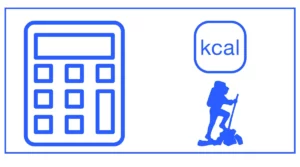Fielding Percentage Calculator
Do you want to calculate your baseball fielding percentage?
This fielding percentage calculator helps you find your percentage using the number of putouts, assists, and errors.

You might be interested in finding or batting strike rate or Bowling Average.
What is the fielding percentage?
Fielding percentage, often abbreviated as FPCT, is a statistical measure that reflects the percentage of times a defensive player successfully handles a batted or thrown ball without committing an error. It’s a key indicator of a player’s defensive reliability and efficiency on the field.
In baseball, defensive skills are crucial for team success. Fielding percentage helps evaluate a player’s defensive capabilities, providing a quantitative measure of their ability to field their position effectively. While it’s not the only metric used to assess defensive performance, it remains a significant and widely recognized statistic in the sport.
How to Calculate Fielding Percentage?
The formula for calculating fielding percentage is straightforward as of EGF calculation:
Fielding Percentage = (Putouts + Assists) / (Putouts + Assists + Errors)
Let’s break down each component:
- Putouts: The number of times a fielder tags, forces, or appeals a runner out.
- Assists: The number of times a fielder helps in a putout.
- Errors: The number of times a fielder misplays a ball, leading to a base runner advancing or a batter reaching base.
Example Calculation
Let’s consider a baseball player with the following statistics:
- Putouts: 100
- Assists: 50
- Errors: 5
Applying the formula:
Fielding Percentage = (100 + 50) / (100 + 50 + 5) = 150 / 155 = 0.968
This player’s fielding percentage would be .968, typically expressed as a three-digit decimal.
Using the Fielding Percentage Calculator
Our fielding percentage calculator is designed for ease of use, allowing quick computation of this vital baseball statistic. Here’s how to use it effectively:
- Enter the number of putouts in the designated field.
- Input the number of assists.
- Provide the number of errors.
- Click the “Calculate Fielding Percentage” button.
The calculator will instantly display the fielding percentage, rounded to three decimal places.
Benefits of Using the Calculator
- Accuracy: Eliminates manual calculation errors.
- Time-saving: Provides instant results.
- Consistency: Ensures uniform calculation method.
- Accessibility: Available for use anytime, anywhere.
Interpreting Fielding Percentage Results
While fielding percentage is a valuable metric, it’s essential to understand its context and limitations:
What’s Considered a Good Fielding Percentage?
Fielding percentages vary by position. Generally, a fielding percentage above .980 is considered excellent for most positions. However, expectations differ:
- First basemen and outfielders typically have higher fielding percentages due to fewer difficult chances.
- Middle infielders and third basemen often have lower fielding percentages due to the challenging nature of their positions.
- Catchers and pitchers are evaluated differently, as their roles involve unique defensive responsibilities.
Limitations of Fielding Percentage
While useful, fielding percentage has some limitations:
- It doesn’t account for a player’s range.
- It doesn’t differentiate between routine and difficult plays.
- It can be inflated for players who don’t attempt challenging plays.
Advanced Defensive Metrics in Baseball
While fielding percentage remains a standard statistic, modern baseball analysis often incorporates more advanced metrics:
- Defensive Runs Saved (DRS)
- Ultimate Zone Rating (UZR)
- Outs Above Average (OAA)
These metrics aim to provide a more comprehensive view of a player’s defensive contributions.
Fielding Percentage in Different Baseball Positions
Fielding percentage expectations vary across different positions on the baseball field:
Infield Positions
- First Base: Typically has the highest fielding percentage due to many routine plays.
- Second Base and Shortstop: Lower fielding percentages due to more difficult plays and longer throws.
- Third Base: Often has the lowest infield fielding percentage due to hard-hit balls and long throws.
Outfield Positions
Outfielders generally have high fielding percentages, often above .980, as they handle fewer chances but have more time to react to batted balls.
Catcher and Pitcher
These positions are unique:
- Catchers: Evaluated on passed balls and thrown out runners, in addition to fielding percentage.
- Pitchers: Fielding percentage is less emphasized due to their primary role of pitching.
Using Fielding Percentage for Player Evaluation
While not the sole factor, fielding percentage plays a role in player evaluation:
- Contract negotiations: Can influence a player’s value.
- Gold Glove Awards: Often considered in the selection process.
- Team strategy: Helps in deciding defensive alignments and substitutions.
Improving Fielding Percentage
Players can work on improving their fielding percentage through:
- Regular fielding practice
- Focusing on proper technique
- Maintaining physical fitness for better mobility
- Mental preparation and focus during games
Fielding Percentage in Amateur and Youth Baseball
The fielding percentage calculator is also valuable for amateur and youth baseball:
- Helps young players understand defensive metrics
- Allows coaches to track player development
- Provides a goal for improvement in defensive skills






